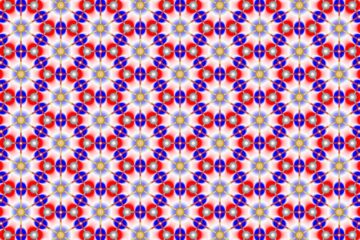Latest News

’MicroRNAs’ control plant shape and structure
New discoveries about tiny genetic components called microRNAs explain why plant leaves are flat.
The study may be a first step, researchers say, in revolutionizing our understanding of how plants control their morphology, or shape. A plant’s ability to grow structures with a specific shape is critical to its normal function of capturing energy from the sun and producing products like grain and fiber.
As such, these findings could ultimately have profound implications fo

Genes that paint fly derrieres hint at convergence
How vastly different animals arrive at the same body plan or pattern of ornamentation has long been a conundrum of developmental biology.
But now, thanks to the colorful derriere of a wild fruit fly, captured on a compost heap by a University of Wisconsin-Madison post-doctoral student, scientists have been able to document a rare example of molecular convergence, the process by which different animals use the same genes to repeatedly invent similar body patterns and structures.
W

From the Big Bang to the Cosmic Renaissance
Nowadays, the Universe is pervaded by energetic ultraviolet radiation, produced by quasars and hot stars. The short-wavelength photons liberate electrons from the hydrogen atoms that make up the diffuse intergalactic medium and the latter is therefore almost completely ionised. There was, however, an early epoch in the history of the Universe when this was not so.
The Universe emanated from a hot and extremely dense initial state, the so-called Big Bang. Astronomers now believe that it took

Astronomers hope for good weather – on Mars
As well as keeping their fingers crossed for good weather during next week’s close approach of Mars, astronomers are hoping that the skies will be clear on Mars itself.
During National Astronomy Week – Saturday 23 to Saturday 30 August – observing events will be held across the UK where the public can view Mars through telescopes. It is expected that thousands of people will turn out to see the planet closer than it has been for almost 60,000 years. But it’’s not just our own

UI researchers use SIREN driving simulator to study driving risk factors
Surrounded by projection screens, a blue Saturn sits in a basement room in the University of Iowa Hospitals and Clinics. If you look very closely, you can see several tiny video cameras inside the car, and a glance under the hood gives a whole new meaning to the term “souped-up.”
In the space where the engine normally resides sits an array of electronic instrumentation that turns this ordinary vehicle into a high-fidelity driving simulator known as SIREN (Simulator for Interdisciplinary Re

ESA sees stardust storms heading for Solar System
Until ten years ago, most astronomers did not believe stardust could enter our Solar System. Then ESA’’s Ulysses spaceprobe discovered minute stardust particles leaking through the Sun’s magnetic shield, into the realm of Earth and the other planets. Now, the same spaceprobe has shown that a flood of dusty particles is heading our way.
Since its launch in 1990, Ulysses has constantly monitored how much stardust enters the Solar System from the interstellar space around it. Usi











